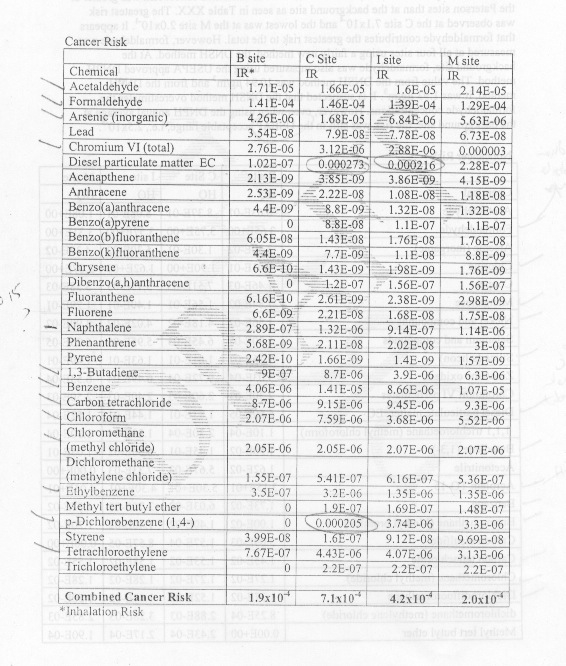Christie Environmental Rollbacks Echo Whitman’s Failed Policy
The past is a remarkable thing. And you know the trite saying about those who fail to learn the lessons of history.
Well, a brief look back shows how Governor Christie is duplicating – almost verbatim – the failed environmental policies of Governor Whitman.
Ironically, as we document in detail below, Whitman herself conceded that failure in her own confirmation hearing for US EPA Administrator. So step right up and come along with us on this magical mystery tour.
Shortly after taking office in 1994, Whitman announced her DEP Commissioner, Bob Shinn, a man with no academic training or professional experience in environmental management. Christie’s DEP nominee, Bob Martin, shares more than a first name with Mr. Shinn.
In spring of 1994, Governor Whitman held a press conference in the Governor Office to personally issue a policy Report with the perverse acronym STARR: “Strategy for Regulatory Relief”. Christie has his “Red Tape Review Commission” Report teed up for spring.
In precisely the same fashion that the Christie Transition Report demonized DEP and environmental regulations for allegedly crippling the economy as a pretext for dismantling environmental protections, the Whitman STARR Report called for the following: (see page 130 of Whitman’s US Senate confirmation hearing transcript):
- Cutting New Jersey’s RTK list from 3,000 to 800 chemicals;
- Increasing the thresholds for DEP environmental reviews of local sewer plans;
- Reduction/elimination of compliance monitoring at major industrial facilities;
- Allowing industry lobbyists to rewrite State air permit regulations;
- Rollback of New Jersey’s model Clean Water Enforcement Act;
- Easing solid water industry economic regulation;
- Rolling back New Jersey’s hazardous waste management regulations to Federal minimums
- deregulating used oil as a hazardous waste;
- Relaxing standards for hazardous waste site cleanup;
- Reducing enforcement penalties;
- Providing grace periods;
- Polluter immunity for self disclosed violations;
- Alternate dispute resolution;
- Emission trading and privatization of permit reviews and hazardous site cleanups;
- Budget and staff reductions at DEP.
Shortly thereafter, on November 2, 1994, Whitman issued Executive Order #27. Whitman’s EO 27, just like Christie’s EO #2, required “cost benefit analysis” and promoted “federal consistency“, a policy that called for rolling back NJ’s standards to federal minimums.
Whitman recklessly issued this federal consistency policy sought by major NJ polluters like the NJBIA and Chemical Industry Council, despite warning memo’s to her DEP Commissioner that federal standards were not “technically justifiable” and totally inappropriate for NJ.
Specifically, to illustrate what was at stake, we disclosed a July 29, 1994 memo from Assistant Commissioner Nagy to Commissioner Shinn, that compared DEP’s strict standards with weaker EPA requirements and warned of a significant increase in the number of potential fatalities. This was not some tree hugger warning, it came from Shinn’s own Assistant Commissioner (complete memo found on page 126 of Whitman transcript):
Industry (e.g., CIC and NJBIA) would obviously prefer backing off to the EPA thresholds. ….However, the increases made by EPA on adoption were so large (averaging some 18 times the TCPA values with 33 of the 60 substances common to both lists assigned from 5 to 167 times corresponding TCPA values) that they are not technically justifiable in an area as densely populated as New Jersey where substances are generally handled on small sites, and would correlate with a significant increase in the number of potential fatalities.
At the request of the then US Senate Environment Committee Chair, we submitted testimony seeking to hold Whitman accountable for the policy objectives and implementation record of EO 27 (see page 120-154 of transcript). Here was our statement to the US Senate on EO27:
Statement 3f: Whitman issued an Executive Order 27 (1994) that mandated that State regulations that are more stringent than Federal requirements be justified by cost benefit analysis. This Order resulted in the across-the-board weakening of, among other things, State regulation for air, water and waste permits, deregulated used oil as hazardous waste and eroded chemical plant safely requirements addressed under the provisions of Section 112r of the Clean Air Act Amendments of 1990.
Remarkably, instead of defending her own “federal consistency” policy, cost/benefit analysis, and Executive Order 27, Whitman submitted testimony that not only falsely denied any rollback of NJ’s state standards (there were several), Whitman did a complete U Turn and strongly made the case in support of NJ’s standards.
The Senate Environment Committee Chair asked Whitman to respond. Read Whitman’s verbatim response to our testimony below (found at p.132-139).
Whitman’s inventory of NJ’s strict environmental standards serves as a primer for Governor Christie. It lays out in detail why Christie’s Executive Order #2 is fatally flawed and why it will suffer the same fate as Whitman’s EO 27.
And in another supreme irony and historical echo, the Whitman response was written by John Spinello (see this), a corporate lawyer who also served on the Christie Environment Transition Team:
Response On Executive Order 27: Executive Order 27 (EO 27) stated that State agencies should consider applicable Federal standards when adopting regulations 136 that have Federal counterparts and should analyze whether existing Federal standards sufficiently protect the health of New Jersey’s citizens. When DEP determines that New Jersey needs more stringent standards, EO 27 simply requires us to explain that decision. Therefore, the Order does not prohibit DEP from adopting standards or regulations that are more stringent than their Federal counterpart and did not force DEP to weaken all existing standards in order to comply with the Order; New Jersey still has the flexibility to promulgate more stringent standards where necessary. In fact, after careful analyses, NJDEP has adopted numerous environmental standards or rules that are more stringent than EPA’s. Some examples include:
AIR
1. New Jersey’s standards for mercury emissions from municipal solid waste incinerators are more stringent than EPA’s. EPA standard is 80 ug/m3 or 85 percent control and New Jersey is 28 ug/m3 or 80 percent control. New Jersey’s standards were effective 1/1/96 whereas EPA’s just came into effect in 12/00.
2. New Jersey’s air toxics program is more comprehensive than EPA’s. New Jersey requires facilities to list air toxic emissions on their permits if they exceed a predefined threshold value. This would then potentially trigger a risk assessment by DEP or the application of a state-of-the-art standard for those air toxics. EPA on the other hand only requires air toxics to be listed on a permit if EPA has promulgated an emission standard for the particular source operation being permitted.
3. EPA does not have NOx RACT rules per se, but the NOx standards in their acid rain rules are less stringent than the NOx standards in our NOx RACT rules.
4. The stringent NOx standards for power plants in our NOx budget rules (.15 lbs/mwh) set the stage for EPA’s subsequent SIP call to 22 States.
5. Our preconstruction permitting program (Subchapter 8) for new and modified non—major sources is more comprehensive than EPA’s. EPA’s permitting trigger is between 25 – 100 tons per year of a given pollutant whereas New Jersey’s trigger (although it’s equipment based) equates to as low as approximately one ton per year.
HAZARDOUS WASTE
1. New Jersey’s 10 day transfer facility requirement is more stringent than EPA’s. We have standards for how waste must be managed during the 10 day holding period and we prohibit the mixing of unlike materials. Also, transporters must tell us that they’re operating a 10-day facility and must keep logs of material entering and exiting the facility. EPA does not have these requirements.
2. New Jersey requires hazardous waste generators to submit hazardous waste manifests (shipping papers), whereas EPA does not.
3. New Jersey requires hazardous waste transporters to be licensed, whereas EPA does not.
4. New Jersey requires entities to submit plans to us for approval before they can process used oil. EPA does not. Also, our standards for halogens in used oil fuel (1000 ppm) are more stringent than EPA’s (4000 ppm).
SOLID WASTE
1. We regulate transfer stations, transporters, and recycling facilities whereas EPA does not.
2. The Solid Waste Utility Control Act requires that people engaged in the solid waste business be regulated as a utility. New Jersey’s rules therefore set forth business practices, transaction standards, competition requirements and billing practices. There is no Federal counterpart to this.
3. The Comprehensive Regulated Medical Waste Management Act sets forth registration, transportation and waste handling requirements that are in addition to the solid waste requirements. This Act was based on a Federal version which has since lapsed. We are not aware of a Federal counterpart at this time.
4. The A901 Disclosure Review Act sets forth standard that must be met in order for an entity to engage in the business of solid waste transportation or processing/disposal. There is no Federal counterpart to this Act.
SITE REMEDIATION
1. When determining whether a site is sufficiently remediated, in most cases we are more stringent than EPA. New Jersey applies a risk factor of 1 x 10(6) (increased lifetime cancer risk)to individual contaminants whereas EPA applies a risk range of 1 x 10(4) to 1 x 10(6) and it is based on the cumulative impact of all contaminants.
2. We regulate large non-residential heating oil underground storage tanks (greater than 2,000 gallons), whereas EPA does not.
3. New Jersey requires that only New Jersey licensed individuals perform work on Federal and state-regulated underground storage tanks. There is no corresponding Federal requirement.
4. New Jersey’s Industrial Site Recovery Act prohibits certain types of industrial properties from being sold or transferred unless they are remediated first. EPA does not have this requirement.
COASTAL MANAGEMENT
1. New Jersey’s freshwater wetlands program includes buffers in the definition of transition areas whereas EPA does not.
SAFE DRINKING WATER
1. New Jersey has 15 chemicals for which we either have more stringent standards than EPA or we have a standard whereas EPA does not. For example, for MTBE, we have a standard whereas EPA does not. Also, for trichlorethylene, New Jerseyâ’s standard is 1 ppb, but the Federal standard is 5 ppb.
2. New Jersey has 13 drinking water standards that are more protective than Federal standards, and standards for 5 additional contaminants beyond those regulated at the Federal level.
WATER
1. New Jersey has regulations governing the construction of wastewater treatment and conveyance systems whereas EPA does not.
2. New Jersey permits all discharges to groundwater whereas EPA only permits underground injection and discharges at RCRA facilities.
3. The State law commonly known as the Clean Water Enforcement act (CWEA) has a number of provisions which are more stringent than the Federal Clean Water Act. In particular, the CWEA requires the Department or Delegated Local Agency to impose mandatory penalties for monitoring omissions or effluent violations that are serious violations or that cause the violator to become a significant non-complier.
PESTICIDES
The following pesticide initiatives/rules go beyond EPA programs and requirements Requirements for notification of the public prior to applications of pesticides so the public may take precautions to minimize exposure if deemed necessary.
1. Require commercial applicators to be licensed and certified (take exams) prior to using any pesticides, not just the more hazardous restricted use pesticides, as an additional protective measure. Require annual refresher training for agricultural workers.
2. Rules on applications conducted in schools in order to be protective of children, who are a vulnerable population.
3. Extensive regulations to prevent contamination, risk and exposure in homes and public buildings during structural pest control applications.
4. Regulate an additional industry sector of dealers of restricted use pesticides through licensing and record keeping requirements.
5. Require permits for aquatic pesticide applications and mosquito control applications to prevent pesticide misapplications and contamination in bodies of water and hazardous exposure during large-scale community spray programs.
RELEASE PREVENTION
1. New Jersey’s discharge prevention program is more stringent than the Federal requirements in that the State program covers a vast array of chemicals as well as petroleum and petroleum products. In addition, all plans required to be developed under New Jersey rules must be submitted to NJDEP for approval, while Federal plans are only required to be submitted for facilities with over one million gallons of storage or facilities that have a discharge. The State program inspects all regulated facilities once a year, and also inspects some non-regulated facilities whereas the Federal program inspects only a fraction of the regulated universe.
2. New Jersey’s TCPA (Toxic Catastrophe Prevention Act) program is more stringent than the Federal program as follows: more covered chemicals; lower thresholds for some chemicals; more reporting requirements; and more inspections per year. Also, the State program requires a risk reduction effort after a hazard analysis is performed.
3. New Jersey’s RTK chemical inventory reporting program is more stringent than the Federal program in that employers must report regulated chemicals at a 500 pound threshold rather than the 10,000 pound Federal threshold. The State’s environmental release reporting program requires reporting at 10,000 pounds rather than the Federal 25,000 pounds. Also, the State program includes materials accounting where the Federal program does not.






